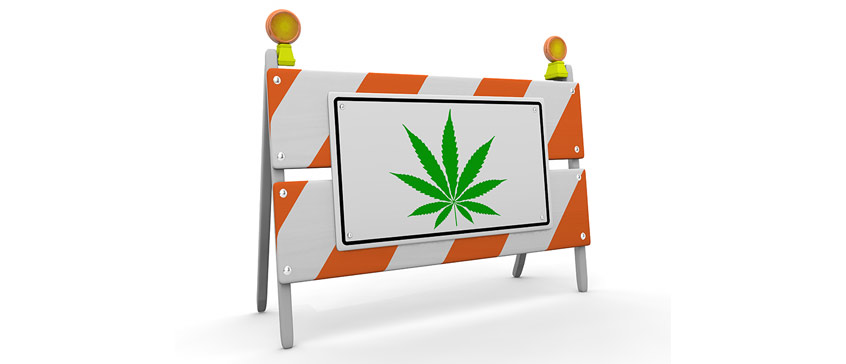Home / Health, Wellness and Safety / News / A "High" Time to Consider Workers' Safety in the Cannabis Industry
A "High" Time to Consider Workers' Safety in the Cannabis Industry

By Gurleen Bhatia, an instructor in the Environmental and Occupational Health program
As of October 2018, non-medical marijuana (or cannabis) has been legalized in Canada. This means adults 18 years or older (19 years in BC) are legally able to possess, share, buy and grow cannabis products.i Although there are strict restrictions put in place by the federal and provincial government around the sale, promotion and enticement of cannabis products, given the novice nature of the cannabis industry, there has been little focus on the occupational health and safety (OHS) of the workers associated with this industry.
Cannabis contains hundreds of chemical substances, many of which are cannabinoids. Among those, Delta-9-tetrahydrocannabinol (THC) is the most understood component which also happens to be responsible for the psychoactive effect or “high” a person experiences after consuming the product.ii The flower of the cannabis plant can be used to produce a variety of edible and concentrated products, although it is most often inhaled via smoking in its dried herbal form.iii When cannabis enters the body via inhalation, the chemicals pass through the lungs and into the bloodstream causing them to get circulated throughout the body and the brain. This in turn causes a variety of effects ranging anywhere from fatigue, light-headedness, disorientation, impairment of motor skills/ decision making, seizures and/or hypersensitivity.iv
In British Columbia, the law prohibits workers from being impaired while they work and requires employers to remove impaired workers from the workplace when necessary. Defining and assessing impairment is a challenging process further complicated by a lack of prescriptive regulation. Employers therefore rely on OHS professionals to use their expertise to develop specific policies and procedures to address impairment in the workplace and to determine whether an employee is fit to safely carry out their work or not. Employers must, however, ensure that these policies don’t infringe on anyone’s basic human rights.
In addition, there are emerging health and safety concerns surrounding the production of these products. With the legalization behind us, the cannabis industry workforce is rapidly evolving and growing. This means that the routine hazards faced by this workforce are now becoming an OHS concern. To put things into perspective, some of the many common hazards faced by the workers in this industry can range from biological hazards such as mold and allergens/sensitizers in the cultivation phase; to chemical hazards such as butane; to physical hazards such as noise; to ergonomic hazards such as repetitive motion in the processing phase; and psychosocial hazards such as workplace violence in the sale phase of the product.v This is where an OHS professional can conduct a job hazard analysis to recognize hazards, and provide recommendations for implementing engineering or administrative controls and/or the use of specific personal protective equipment to help eliminate or minimize workers’ exposure to these hazards.
An OHS professional can use fundamental knowledge of the human body’s interaction with chemicals to help develop policies and guidelines where needed. He/she can assess the mechanisms of toxicity such as routes of entry, exposure–response relationship, and a chemical’s immediate, versus long-term, effects on a worker’s body.
About the author
Gurleen Bhatia is an occupational health and safety superintendent with the City of Vancouver. She holds a bachelor’s degree in Environmental Health from the British Columbia Institute of Technology and a master's degree in Occupational and Environmental Hygiene from the University of British Columbia. As an OHS superintendent, she is responsible for overseeing health and safety of the workers by conducting routine risk assessments, and identifying and implementing controls for a number of health and safety hazards found in the workplace. Prior to her current position, Gurleen spent many years as an environmental health officer with the Fraser Health Authority, conducting public health regulatory enforcement in a wide range of occupational settings before transitioning into the role of a health built environment specialist. In this capacity, she provided oversight to Fraser East municipalities regarding the adverse health effects and exposures affecting the public due to inadequacies in community planning.
References
i Canada Department of Justice- Cannabis Legalization and Regulation
ii CCOHS. Workplace Strategies: Risk of Impairment from Cannabis. 3rd Edition
iii CCOHS. Workplace Strategies: Risk of Impairment from Cannabis. 3rd Edition
iv Health Canada. (2016a). Consumer Information – Cannabis (Marihuana, marijuana)
v Colorado Department of Public Health & Environment- Guide to worker Safety and Health in the Marijuana Industry- Marijuana Occupational Health and Safety Work Group
- Posted February 9, 2021
RELATED TOPICS: Health, Safety and Emergency Management
Visit Registration
2nd Floor | Continuing Studies Building University of Victoria Campus 3800 Finnerty Road | Victoria BC | CanadaTel 250-472-4747 | Email uvcsreg@uvic.ca
2025 © Continuing Studies at UVic
Legal Notices |
Sitemap

